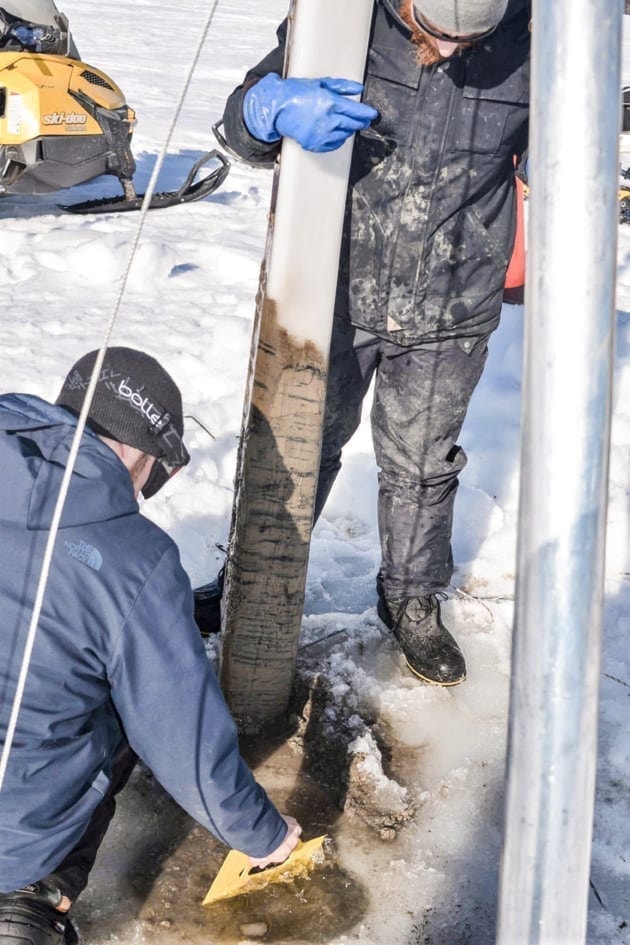Researchers from Carleton University are developing innovative technology to create clarity on natural background contaminants, and natural climate cycles, in Northern lake sediment.

Photo courtesy of Dr. Tim Patterson
The academics are partnered with TerraX Minerals Inc., as the project has potential to help new Northern mines create reclamation plans, and will be conducting fieldwork this summer at the company's Yellowknife City Gold project, 10 km outside Yellowknife.
The research could also help climate researchers.
"Metals in sediment behave differently at different points in climate cycles," said Carleton's geology professor Dr. Tim Patterson, the lead on this project, referencing natural climate cycles, which are separate from global warming.
"Sometimes you could have like a higher level of a metal like arsenic, or other times lower, that was related to just natural processes going on in the lake."
This has big implications for mining companies that are trying to gather baseline environmental contaminant levels on which to build their mine reclamation plans.
Researchers can take a snapshot of these natural cycles by taking a core sample of the sediment in a lake bottom.
Low sedimentation rates
in lakes
"The problem in the North," said Patterson, "is that the sedimentation rate in lakes is often very low because it's cold – the lakes turn on later in the spring and they freeze up earlier in the fall."
This means there isn't much time for sedimentation to happen.
"You could end up with taking maybe six, seven years of deposits in a single millimetre of sediment."
When these core samples of mud are brought up, the particles can slurry around and mix, losing the fine detail necessary to read Northern sediment records.
Patterson's team has developed technology in which metal surfaces, kept cold by dry ice, freeze a core sample of sediment to them and bring up intact samples.
A high-resolution scanning machine called Itrax XRF, developed by Eduard Reinhardt at McMaster University, can then read these samples – but it can take 30 hours to scan half a metre of core.
"That's a problem if you have a frozen core," said Patterson. "It's like a Popsicle – it's not going to stay frozen for very long."
This summer's work is going to build on a prototype vessel, developed by one of Patterson's students, that could keep the samples frozen longer so they can be scanned.
"We need to develop longer containment vessels more and use more exotic technologies," said Patterson.
The other half of Patterson's project mandate is to develop calibration protocols to convert Itrax data to the industry standard ICPMS (Inductively Coupled Plasma Mass Spectrometry), which is an absolute measure of metal concentration.
"This combination is ideal for companies," said Patterson.
"If you scan through a metre of core, that's thousands of years. You can look at all the cycles that are found in there. You can determine what's the natural variability in the lake system and that can be used to help develop the minesite reclamation plan for a company as it starting up a new mine.
"And that could be worth an enormous amount of money in savings for them as they develop these plans."
It's especially useful for TerraX, whose exploration project sits on geology with naturally occurring arsenic and is also in an area into which arsenic trioxide blew in on the wind during Giant Mine's early days of operation.
TerraX did not respond to a request for comment by press time.
The project is also partnered with the North Slave Metis Alliance.
The project partners "bend over backwards to help us," said Patterson.
